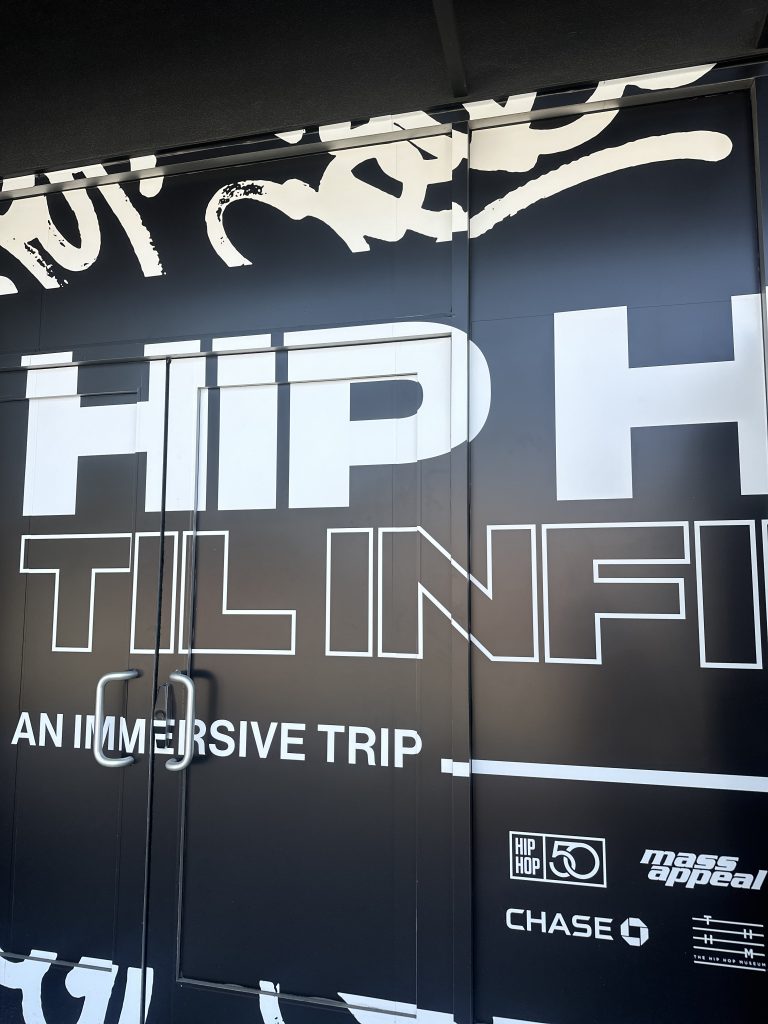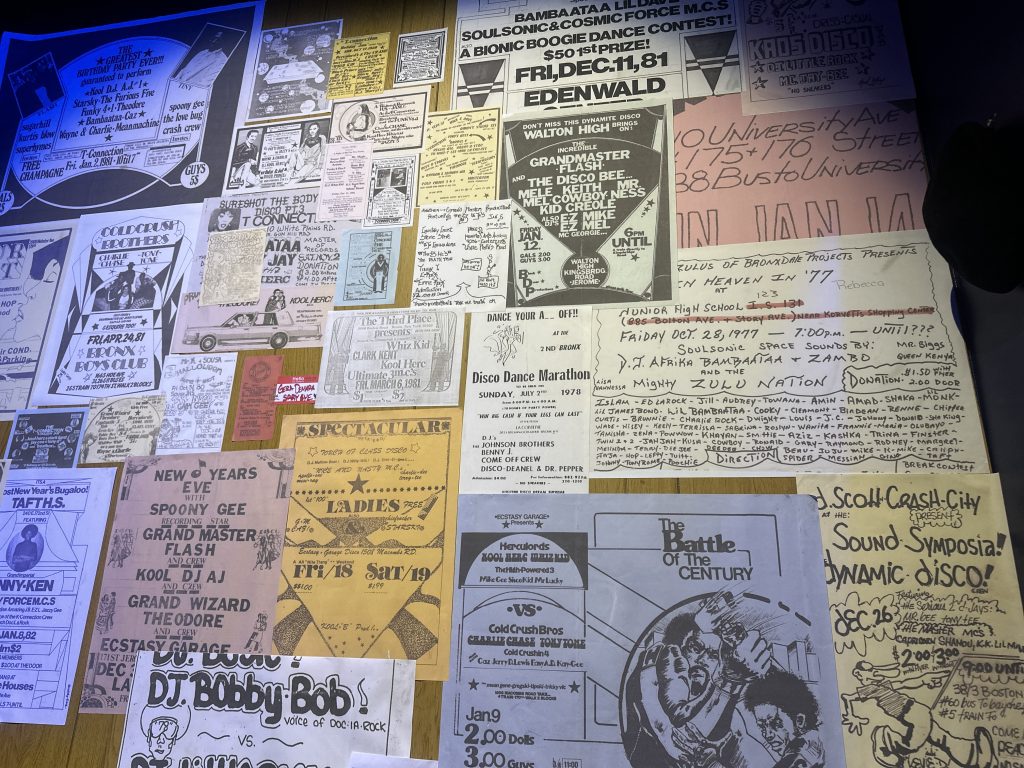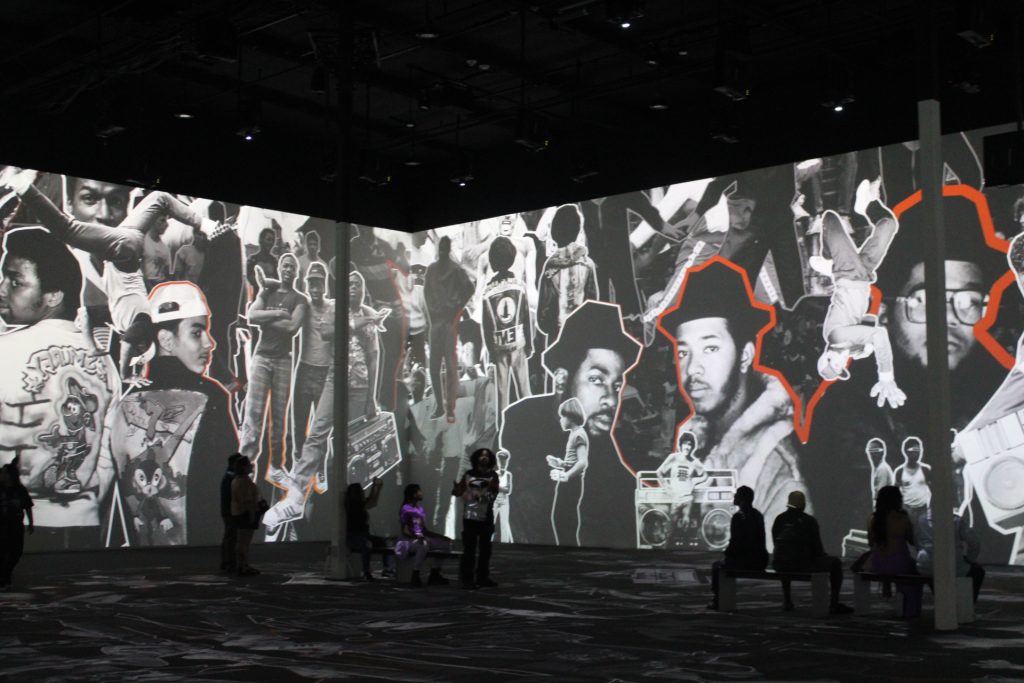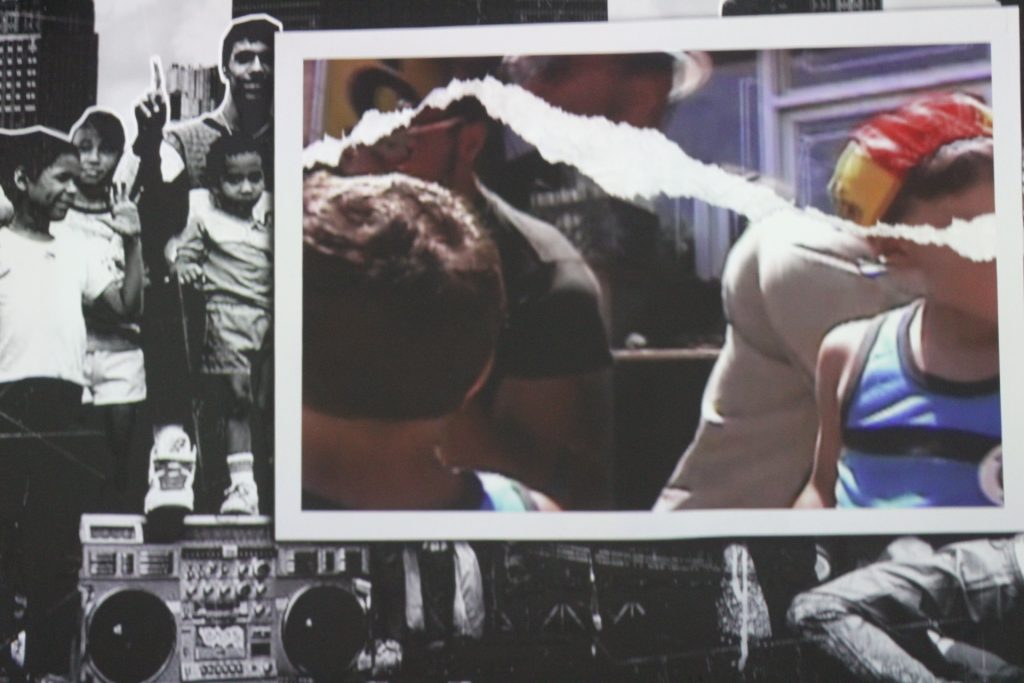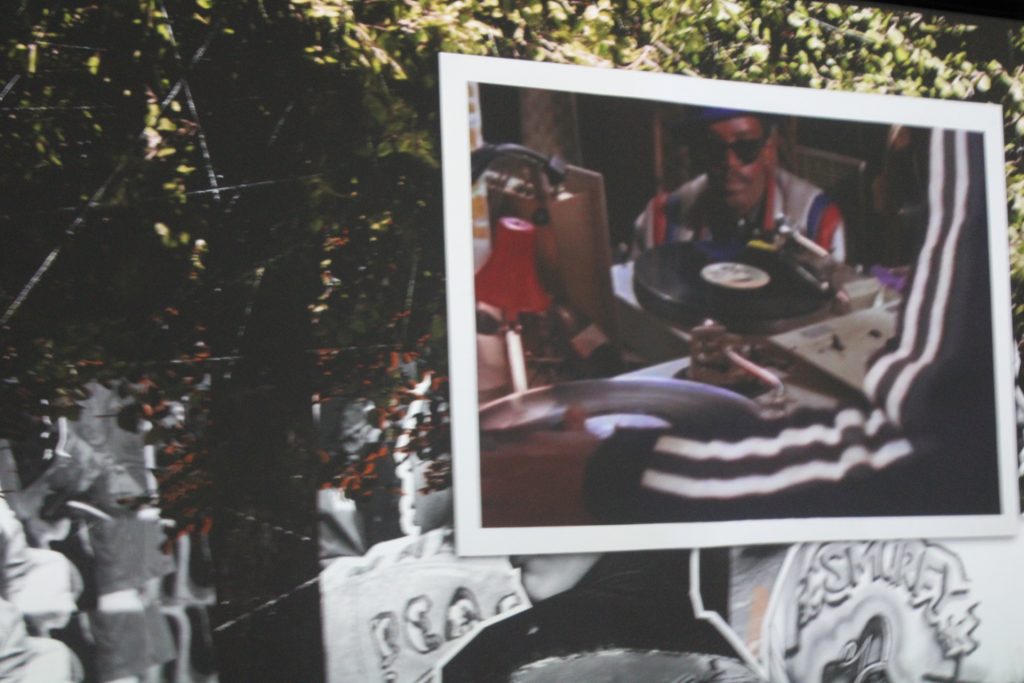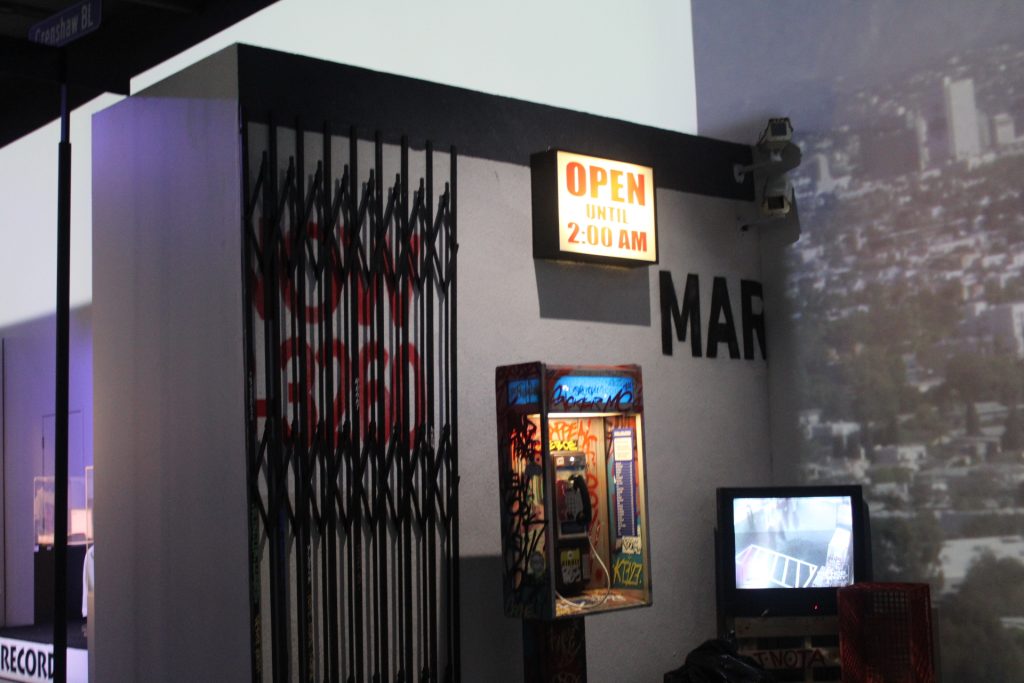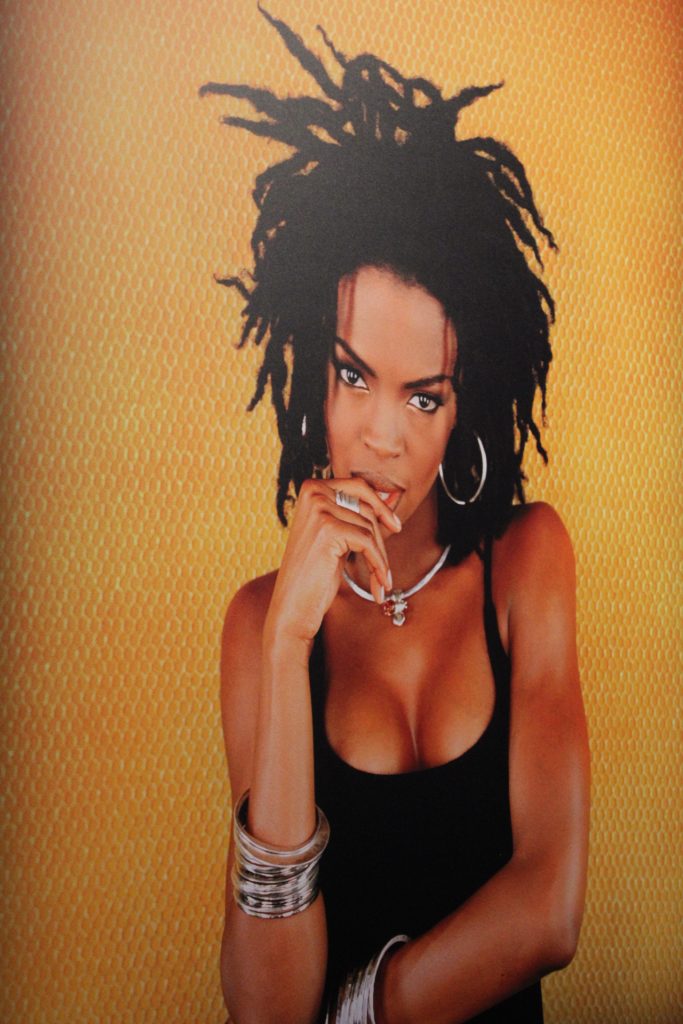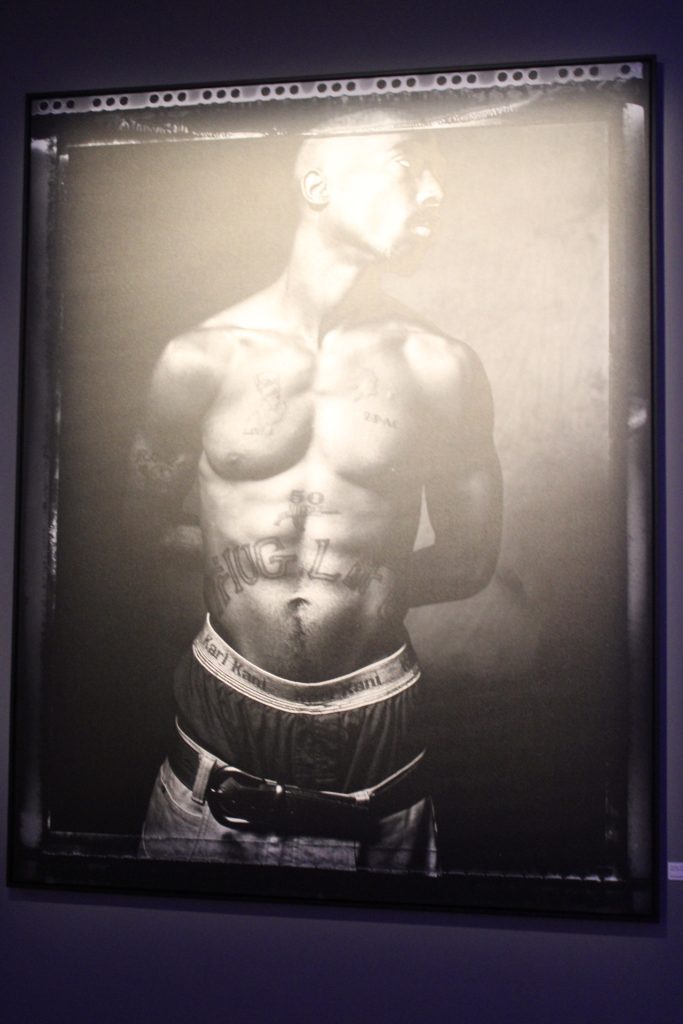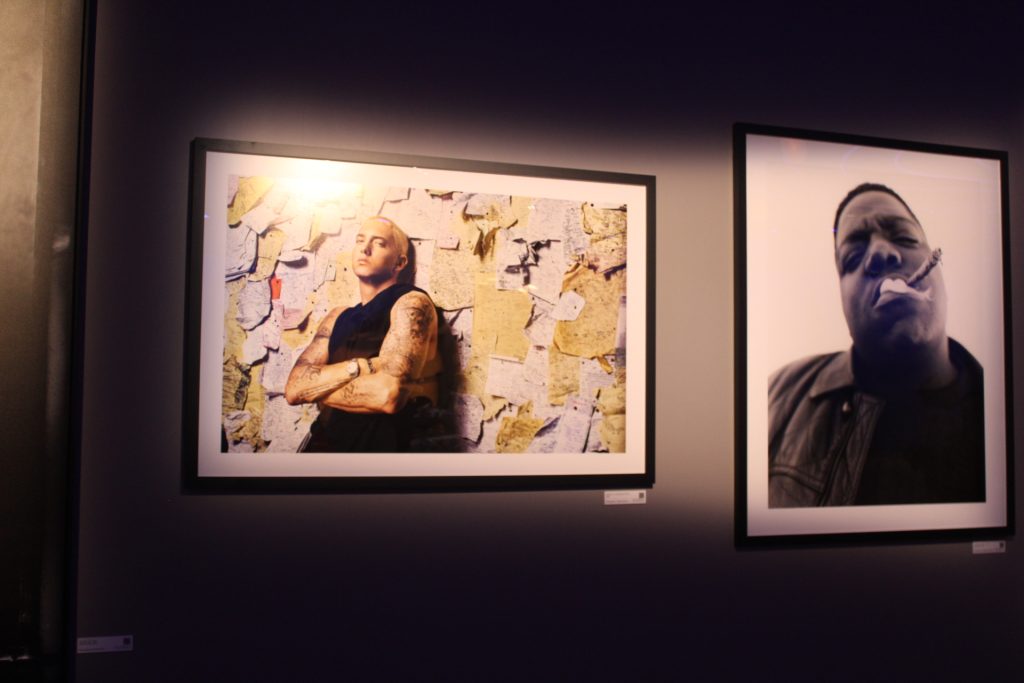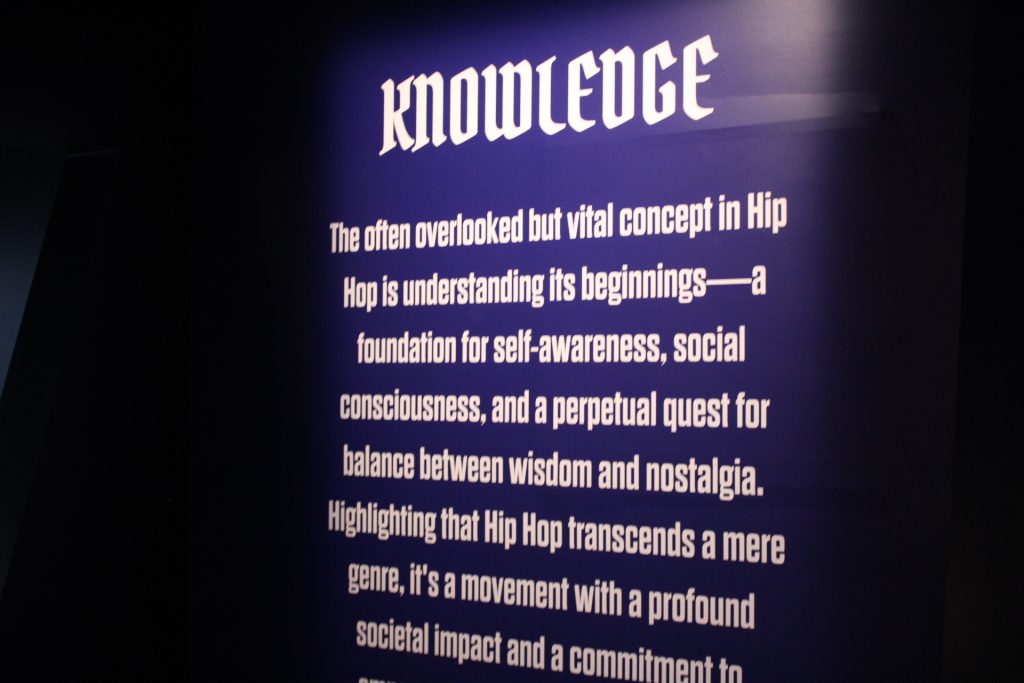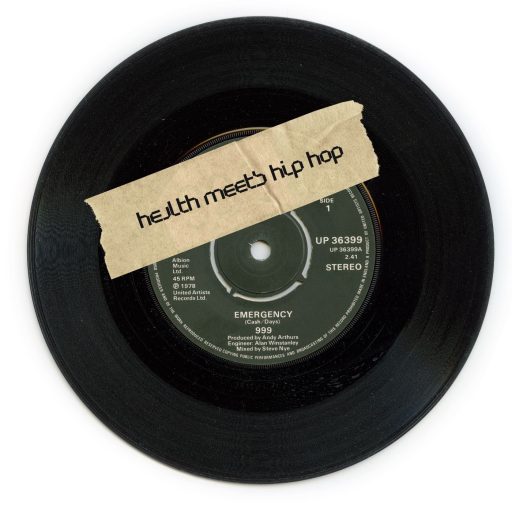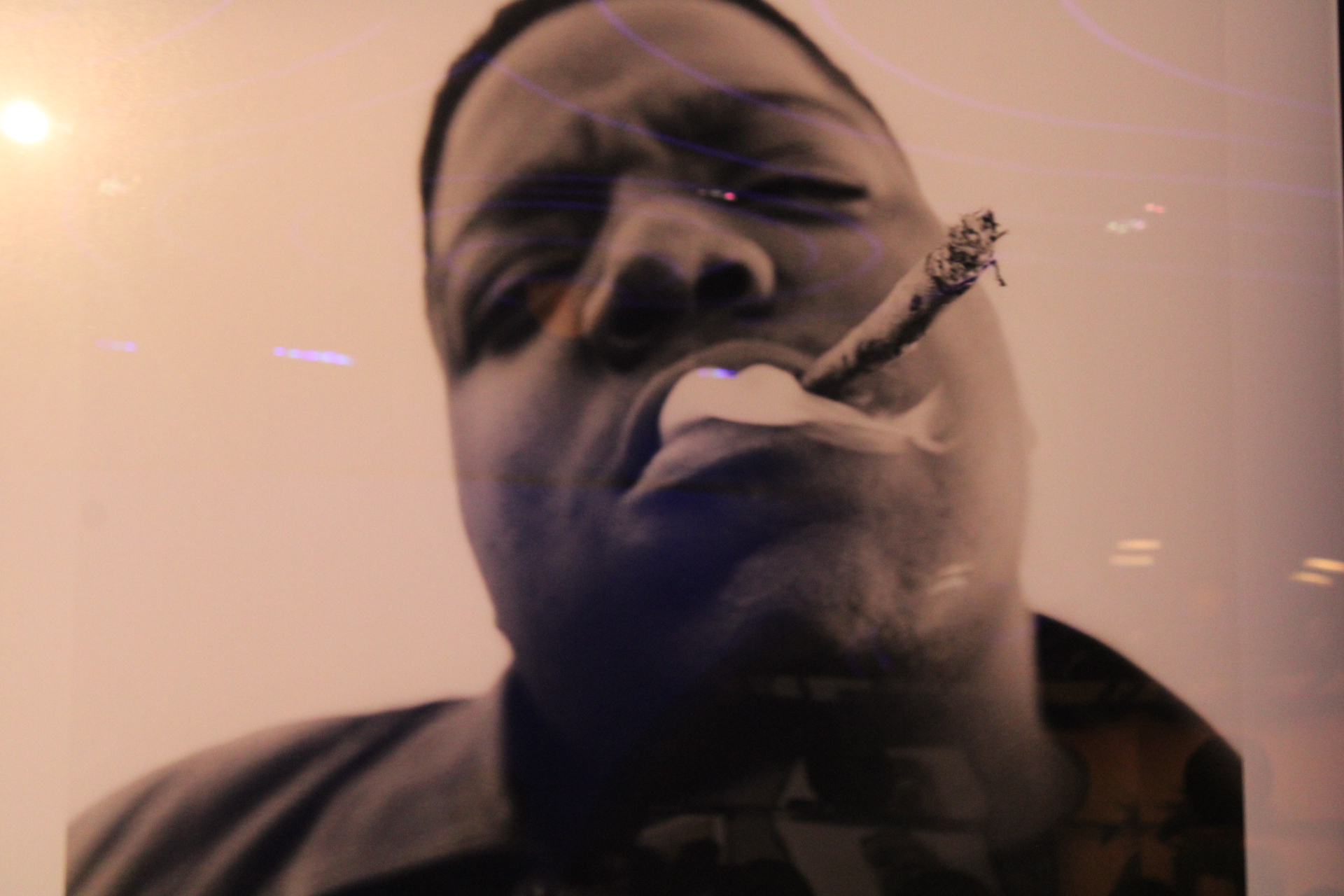-
Health N Hip Hop: An East Coast Story
MICHELLE LOCKE, FOUNDER OF HEALTH N HIP HOP Michelle Locke has loved hip-hop since the beginning of her life. She grew up passionate about the […]
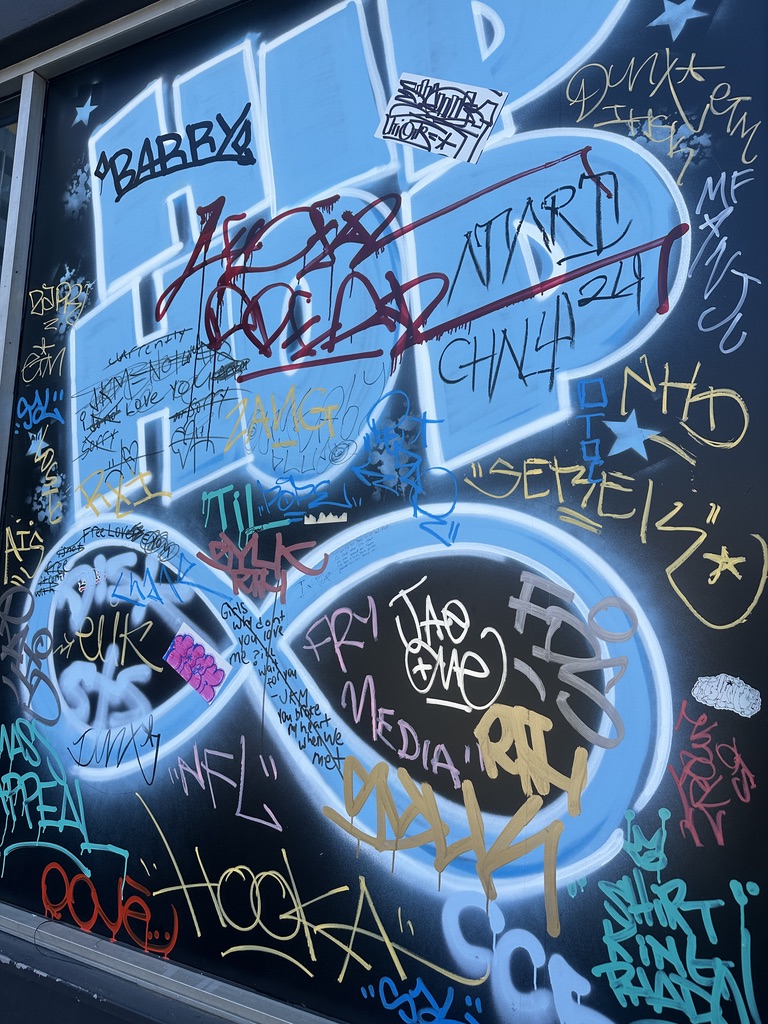
-
GO! Towards Health
Common, one of the most influential rappers of the 90s, was born in Chicago in 1972, where he was raised by his two parents and […]

-
Nu(heal)thin’ But A “G” Thing
Snoop Dogg made a decision to stop rapping about “death and violence,” as he refers to in an interview with Rolling Out. “On my second […]

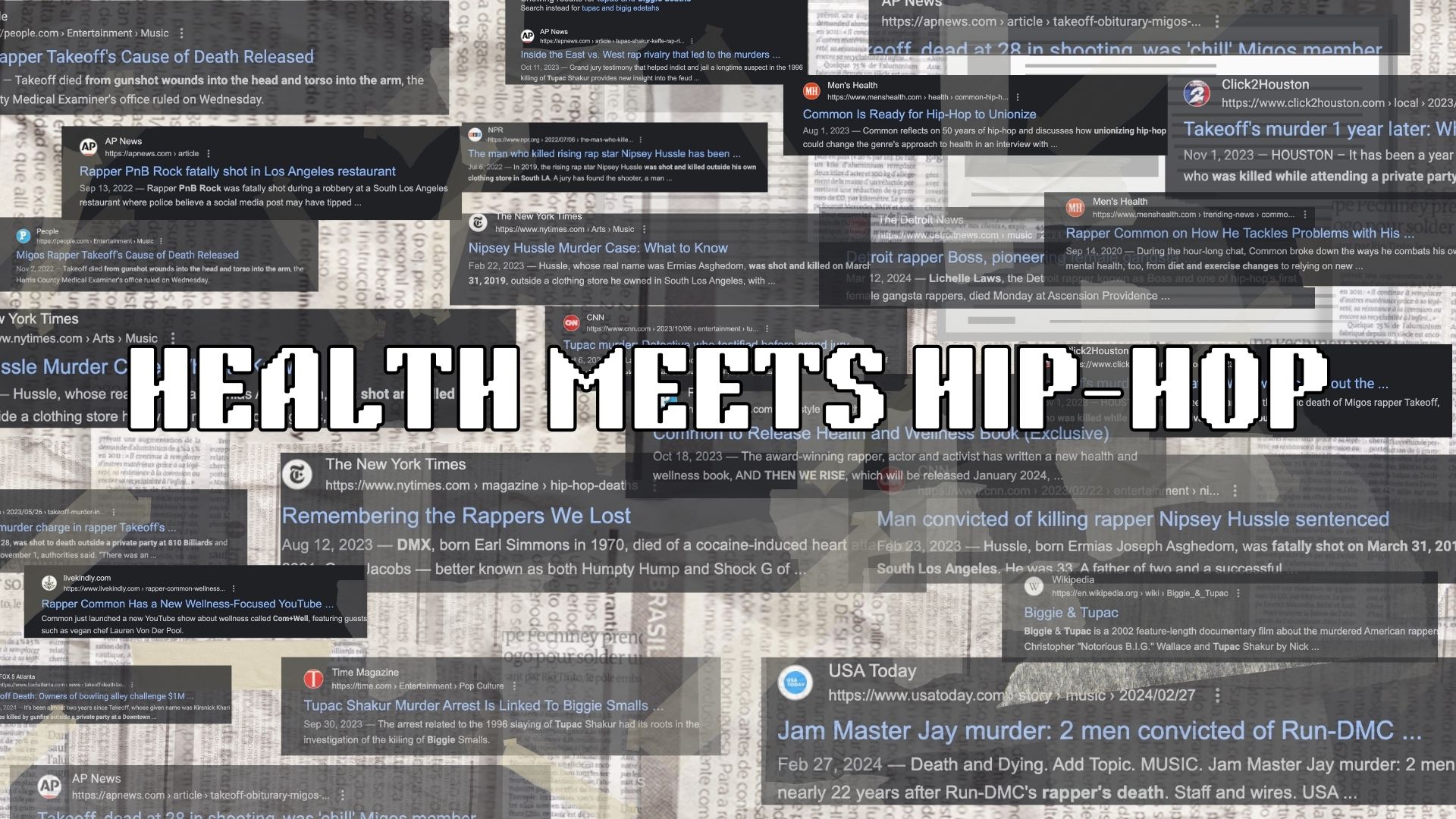
THE INTERSECTION OF HEALTH AND HIP-HOP
Musicians are nearly three times as likely as the general population to lack health insurance. Artists like Boosie Badazz, Berner, and E.S.G. have been diagnosed with cancer. Eazy-E died from AIDS. DMX died from a heart attack. What does one do when they receive a diagnosis that they don’t have the insurance, support, or the resources to treat?
By: Taylor Marie Contarino
Wytony “Big Wy” Dillon, one of Inglewood’s most influential rappers, had big dreams of restarting his life in his forties, to refocus on reclaiming his health for the sake of himself, his music career, and his beloved daughters.
“A quote my father always told me was ‘as long as you are in the race, you have a chance to win,’” recalls a sentimental Kerrington Dillon, the 22-year-old daughter of Big Wy.
A signee of Death Row Records, and creator of hit song “Teach Me How To Dougie,” Big Wy was a pioneer of West Coast rap music, co-signed by hip-hop heavy hitters like Snoop Dogg, Westside Gunn, and Suge Knight.
Big Wy never got to live long enough to see through his wellness aspirations. He passed away on June 1st of last year, at only 49 years old, due to health issues, including a brutal fight with diabetes.
Tragic tales like Big Wy’s are all too common in hip-hop, a genre that often glorifies struggle, minimizing both mental and physical well-being. Whether it be from the wounds of addiction, the hazards of a street lifestyle, or a premature decline in physical health, far too many hip-hop artists have experienced early deaths. Longevity in the genre remains elusive, with a need for solution-oriented change on the horizon.
Staying In The Race
In his late forties, the rapper was just beginning his journey towards a healthier lifestyle, putting all the unhealthy habits he ever knew behind him in the name of survival.
“I just want people to know that no matter what he went through, he persevered. After Death Row dismantled, my dad didn’t create much for years but he never gave up on the dream,” said his daughter.
Big Wy was committed to bettering his health, but his diabetes diagnosis and underlying health issues prevented him from fully executing those visions.
“He battled multiple health issues and used music as his healer. Even though music is a healer, mental and physical health still should be a top priority. So many musicians have underlying health issues but they are so consumed with their art, they neglect their health,” said Dillon.
Big Wy passed away at 49 in Inglewood, CA, due to health complications including a diabetes diagnosis. Photo courtesy of Kerrington Dillon.
“At the end of his life, my father was planning to transition into the health and wellness space and also film and TV,” she said. “Unfortunately he wasn’t able to see that through, but I will be continuing that for him.”
Big Wy smiles even in the midst of struggle, in a photograph before his passing in 2023. Photo courtesy of Kerrington Dillon.
Big Wy cited his struggles partially to his music career, and how caught up he got in the lifestyle of being an artist. In a vulnerable documentary, #SaveBigWY, the musician got real about his struggle with health issues, particularly the diabetes diagnosis that changed his life.
“Having a little money made me lazy, it made my health take a turn for the worse,” raps the late Big Wy, reflecting on health struggles that he documents later on in his public-facing documentary.
Big Wy founded the West Coast rap group, Cali Swag District, which disassembled after the deaths of two members, M-Bone (2011) and Jayare (2014). After this and several hospitalizations, he decided to really begin prioritizing his health.
“I knew I had to get a hold of this, man, because I’ve got things that I need to live for – my girls – they mean the world to me and I know they need me – I need me,” said Big Wy.
In The Name of Health
For years, many hip-hop musicians have suffered from a variety of factors including a lack of resources, lack of access to health care services, violence, racism, and even cross-generational feuds which have led to grief and loss, all of which play a major role in the health of artist across the industry.
The intersection of health and hip-hop may seem like unlikely territory – but the industry is in desperate need of better resources and more sustainable health habits.
Early deaths among the hip-hop music community have been prevalent since the genre’s inception, due to a variety of factors including lack of access to health care, a limited focus on health and sustainable habits, as well as issues including violence and conflicts among the community.
Big Pun died of a heart attack.
J. Dilla died from lupus-related complications.
DMX died of a heart attack.
Juice WRLD died from an overdose.
Mac Miller died from an overdose.
Philadelphia rapper Freeway was diagnosed with kidney failure in 2015, but team members urged him to keep the news private, out of fear of his looking “weak” in the public eye.
In the midst of clear health issues present in the community – why is it that nobody wants to talk about it?
Unsolved, Prolonged Issues
In 2023 alone, more than 15 notable rappers died due to various causes, including mental and physical health related issues as well as gun violence.
According to an XXL Study from 2022 called “The Current Status of Every Murdered Rapper’s Case,” in the 35 years between Scott La Rock’s shooting death in the Bronx in 1987 and Takeoff‘s murder in 2022 (one of the most recent hip-hop murder cases), there have been more than “91 rappers who have been killed, about two per year and sometimes more.”
When it comes to the wellbeing of rap musicians, there are more factors that come to play than just what meets the eye. Many rappers do not have access to health care or health insurance.
Where, then, do rappers without insurance go when they get shot? And what happens if they go to get treatment, but are rejected?
(Information Courtesy of: The Current Status of Every Murdered Rapper’s Case – XXL)
Information Credit: XXL Mag https://www.xxlmag.com/current-status-murdered-rappers-cases/
A “Restless Lost Angel” back tattoo is photographed in a multimedia documentary at the Hip-Hop Til Infinity Museum on Sunset Blvd. in Hollywood, which recently closed on April 28. Photo Credit: Taylor Contarino
The hip-hop music community has suffered from a lack of resources and support for many years now, which is the case for many musicians as a whole, an overarching theme across musicianship as a career.
Musicians are nearly three times as likely as the general population to lack health insurance, with the structural reasons including a lack of health care. Artists like Boosie Badazz, Berner, and E.S.G. have been diagnosed with cancer. What does one do when they receive a diagnosis that they don’t have the resources to treat?
In the U.S.A, most laborers get their insurance through their employer. However, for musicians, the structure of their employment is “a lot more complex and varied than for the average American laborer” according to the Future of Music Organization.
Consequently, many musicians lack structured health care and support.
Video Credit: Taylor Contarino (Music used via CapCut Creative Commons)
Inaccessibility
Last year, several popular rappers banded together in the name of health.
In September of 2023, rappers including Fat Joe, Rick Ross, Busta Rhymes, Method Man, French Montana, and Chuck D all joined forces to unite with Power to the Patients in a public service announcement to demand health care transparency.
In an online survey from the Future of Music Coalition and Actors’ Fund Artists Health Insurance Resource Center, it was found that only 50% of full-time musicians actually had health care.
It was found that 88% of those didn’t have health care, simply could not afford it.
Out of those who did have health care, only 22% of them received it from their employer.
A pie chart created by Taylor Contarino. (Information Courtesy of: Digital Music News
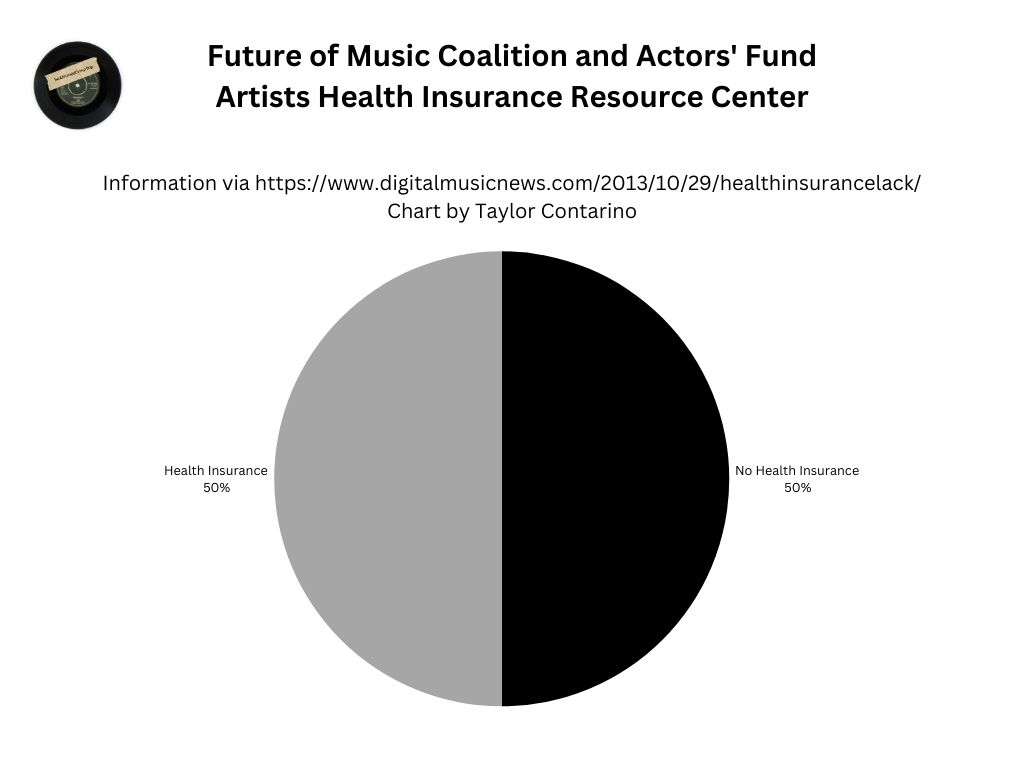
The Hard Convo$
The hard conversations that the industry doesn’t want to have are contributing to the pain among it’s artists.
According to Dillon, the hip-hop music scene across the board has been in need of better resources, and of better transparency across the board. There is a sense of shame across certain topics, and a lack of desire to have to process conversations about deep and difficult topics.
“I believe the main roadblock people may feel in the hip-hop community is the sense of shame. So many people are afraid to express when they are hurting until it eventually makes them physically sick,” Dillon said.
In 2022, Kendrick Lamar released “Mr. Morale and The Big Steppers,” an album that publications like The Cavalier Daily have referred to as a “cathartic therapy session.”
The album commented on topics including therapy, homosexuality, trans rights, toxic relationships, and more. It has been criticized over the years for being overly-soft and “feminine,” and for “lacking replay value.”
So – if nobody wants to talk about hard things, who’s going to start these conversations?
When even a Pulitzer prize-winning rapper is criticized for his deft handling of difficult and important conversations, it suggests that both artists and fans alike are not willing or ready to discuss these prevalent, difficult topics.
Mr. Morale and The Big Steppers is a studio album by Kendrick Lamar, released under his label, pgLang with Top Dawg Entertainment and Aftermath/Interscope Records.
A photograph of a Kendrick Lamar portrait hangs on display at the Hip-Hop Til Infinity Museum on Sunset Blvd, which closed on April 28.
Photo Credit: Taylor Contarino
Proactivity or Reactivity?
If no changes are made, artists will continue to suffer. How can the music industry move towards providing resources for a more sustainable lifestyle for artists?
According to experts such as Joshua Salmon, a Strategic Partnerships Representative at Universal Music Group in the °1824 Department , the music business tends to be more reactive than proactive.
“When you’re in a capitalistic society, running a business leads us to be more reactive than proactive,” said Salmon, “Seeing how far you can push the button.”
In the end, artists sometimes sign deals that may appear “too good to be true,” then find themselves blowing their label-given money away and not ending up with the things they actually need to sustain themselves.
A portrait of Outkast is on display at the Hip-Hop Til Infinity Museum. Photo Credit: Taylor Contarino
“The best thing the industry and artists could do for artists is have a standard – have morals,” said Salmon.
Salmon reflects on the topics covered often in hip-hop: “A lot of music in general talks a lot about depressive topics and if we’re not careful, we could promote a depressive culture,” said Salmon. “On the flip side, though, hip-hop music has been a healthy coping mechanism for many people.”
“When it comes to our artists, a lot of the times when an artist passes away, people get upset but it’s a one and done,” said Salmon. “We need to become proactive rather than reactive.”
Hip-Hop 101: Creating Change
It’s not all bleak, however. There are fans and artists out there who prioritize health, and are willing to do the work to move towards a healthier hip-hop community.
Organizations like “Health N Hip-Hop” look forward to a future where the hip-hop music scene is offered better resources and support for it’s artists and inhibitors. The organization was started by Michelle Locke, an employee at Universal Music Group who wants to be able to “provide resources, knowledge, building spaces and communities where artists can come together.”
A sign is photographed at the Hip-Hop Til Infinity Museum. Photo Credit: Taylor Contarino
Locke discusses the impact of environments on artists’ well-being: “A lot of artists come from food deserts,” said Locke.
Food deserts are areas that lack access to affordable, healthy, robust food options.
Many hip-hop artists grow up in inner-city food deserts that lack access to affordable and healthy food. Over time, unhealthy habits become their version of normalcy, so they don’t question this or feel the need to change.
“That’s really what ‘Health N Hip-Hop’ is meant to be, and what I hope it’ll be,”Locke said, on her platform that she intends to utilize to promote better health across the board in the hip-hop music industry.
“You really don’t see a lot of other genres getting talked about in the way that hip-hop is talked about.” i.e. ‘hip-hop saved my life,’” said Locke.
In the hopes of creating a better and healthier future for hip-hop artists and fans, education within hip-hop has been growing as a priority among it’s supporters.
Isa Whitaker, an educator, teaches 5th and 6th grade students in Asheville, NC. He works for a non-profit, and teaches hip-hop history classes focusing on “healing” through hip-hop, where he discusses how hip-hop can be used in healthy ways for coping.
HIP-HOP 101
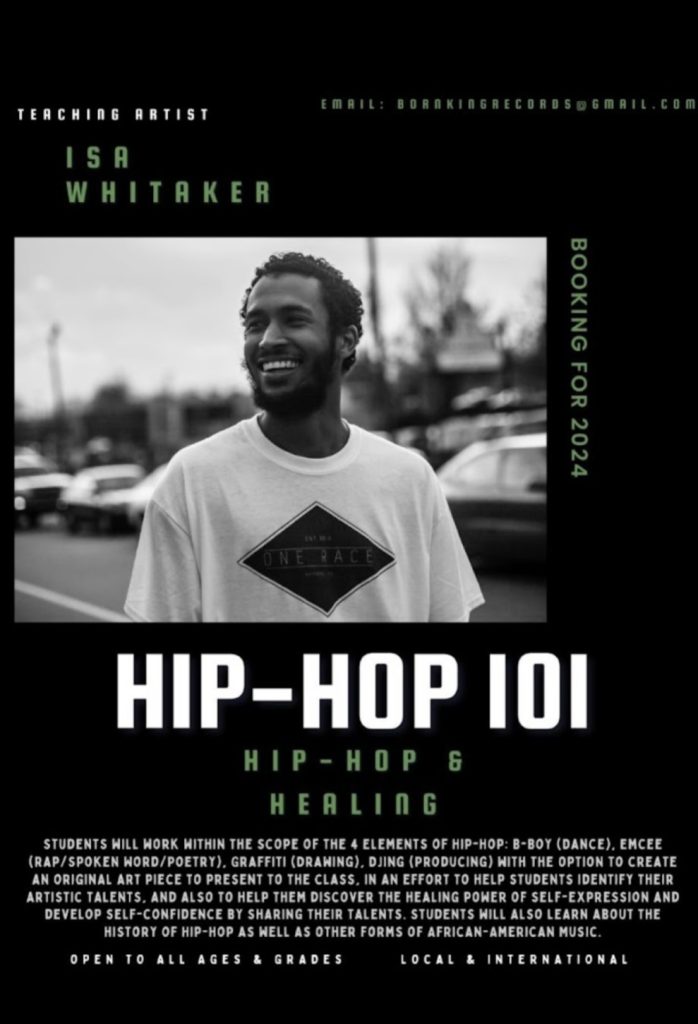
Vitality and Sustainability Across The Genre
What do you do when you get to the end of your life and realize that old habits are catching up to you?
30 years ago, early contenders of the rap music genre like Common, Snoop Dogg, Biggie, Tupac, and Big Wy were in the primes of their careers. Now, many of the early greats are no longer with us, for reasons that could have been prevented.
“I do think it’s certainly been concerning the last couple years when you’re talking about some of the multiple artists at a young age who’ve lost their lives,” said musicologist and music history professor, Dr. Sean Nye, who teaches Hip-Hop History and Culture at USC. “That can cross from violence to mental health issues and drug use as well. There’s certainly a major concern there, in terms of the music industry’s support for artists.”
Now, only some of the early heavy-hitters remain, and are urging future generations to do better.
Nye cites one of the industry’s issues as “overcoming the stigma” against talking about mental health. In describing potential solutions, he adds: “You actually have to have the structural support to get that access in the first place,” talking about access to mental health and health care resources.
To Nye, a blatant stigma across the hip-hop industry rejects conversations around mental health, due to artists fearing that they would look weak or inferior – the concept of toxic masculinity playing a role here.
When asked what would help the hip-hop industry get to a better place, Nye responds: “Proper compensation, ongoing support, for later generations – feeling supported. It’s a multigenerational question.”
A wall is photographed at the Hip-Hop Til Infinity Museum. Photo Credit: Taylor Contarino
Artists who have previously rapped about violence related topics have gradually shifted to speaking on a new array of topics. These artists have come forward describing why they’ve left certain lifestyles behind in the name of health.
Common and Snoop Dogg are still with us, but many of their peers are not, and they themselves have even begun condemning certain practices and methods within the community.
Common recently released his third book, a book chronicling mental health and wellness in Black and Brown communities, and Snoop Dogg himself has started condemning his past actions.
A large, graffitied “Welcome to Los Angeles” I-10 sign is on display at the Hip-Hop Til Infinity Museum. Photo Credit: Taylor Contarino
Who survived and how?
Now in their fifties and sixties, many of today’s popular artists have begun denouncing violence, drugs, alcohol, and some of the life choices they used to be privy to. Jae Deal, a music producer and Hip-Hop Culture Professor at USC, reflects on the topics he’s seen covered heavily across the genre, including sex, drugs, violence, alcohol abuse, and even drug overdoses.
“You’ll see rappers like Snoop Dogg, Ice-T— people have been around for a long time denouncing gangster activity, violence, and say that was a part of their artistry early on,” Deal said. “But now, they’ve evolved.”
Deal sees the current hip-hop industry as somewhat of a continuous feedback loop for certain messages, actions, and idologies that just are not healthy or sustainable.
Reflecting on certain choices of messaging within the genre, Deal brings up a metaphor about microphone audio feedback that many artists deal with during performances when the audio cuts out and rebounds their own voice back to them.
“It is a feedback loop for just a very narrow, niche lane of messages,” he said.
Although Deal isn’t necessarily a fan of songs with messages that overly accentuate partying and framing women in negative, misogynistic ways, he understands that the business model within music can sometimes lead to an accentuation of topics that make money, over topics of substance.
And, sometimes, these topics promote unhealthy, unsustainable habits.
“Too much of a focus on negative subjects, but it makes money – too much focus on making money over quality,” he said.
A wall of televisions playing hip-hop centric videos is photographed at the Hip-Hop Til Infinity Museum. Photo Credit: Taylor Contarino
“When hip-hop was started, it started as a genre that was meant to communicate the feelings of Black people…The culture has shifted a lot from what it was in the 90s,” said Salmon.
Salmon believes that certain taboo topics are brought up too much in the genre, and more could be done to steer away from unhealthy coping mechanisms, including drugs and alcohol.
“We could do a lot less to promote drug abuse,” he said.
The Bigger Picture
“You’ll see rappers like Snoop Dogg, Ice-T— people have been around for a long time denouncing gangster activity, violence, and say that was a part of their artistry early on,” Deal said.
In 2000, hip-hop duo dead prez released “Be Healthy” from the album “Let’s Get Free.” The track is a rare anthem dedicated to healthy habits, exercise, and wellness.
“They say you are what you eat/so I strive to eat healthy/
My goal in life is not to be rich or wealthy / ‘Cause true wealth come from good health and wise ways/
We got to start taking better care of ourselves”
Now more than ever, paving the way for a healthier future starts on the inside of the industry.
Talking about rappers who’ve changed their ways, Deal says, “They can see a bigger picture. Then, they take younger rappers under their wing and mentor them.”
The Raw Data: Find A Way
In the past five years, we have lost: Coolio, PnB Rock, Young Dolph, Juice WRLD, Biz Markie, DMX, and more.
Rappers such as XXXTentacion, Juice WRLD, Lil Peep, and Ol’ Dirty Bastard have died due to drug-induced overdoses. Phife Dawg (A Tribe Called Quest), Tim Dog, and Biz Markie all died in their forties and fifties from complications related to diabetes. Gangsta Boo died at 43 from a drug overdose in January 2023.
In a 2015 article from “The Conversation,” the author conducted a study of samples across multiple genres of music, and found that over half of dead hip-hop artists were murdered.
The National Library of Medicine conducted a sample on topics and ideologies covered within hip-hop music. In the study, the library conducts an analysis of lyrics to 125 popular rap songs sampled from 1998 to 2018. Their findings discovered a sharp increase in the number of song lyrics linked with depression and other mental health disorders.
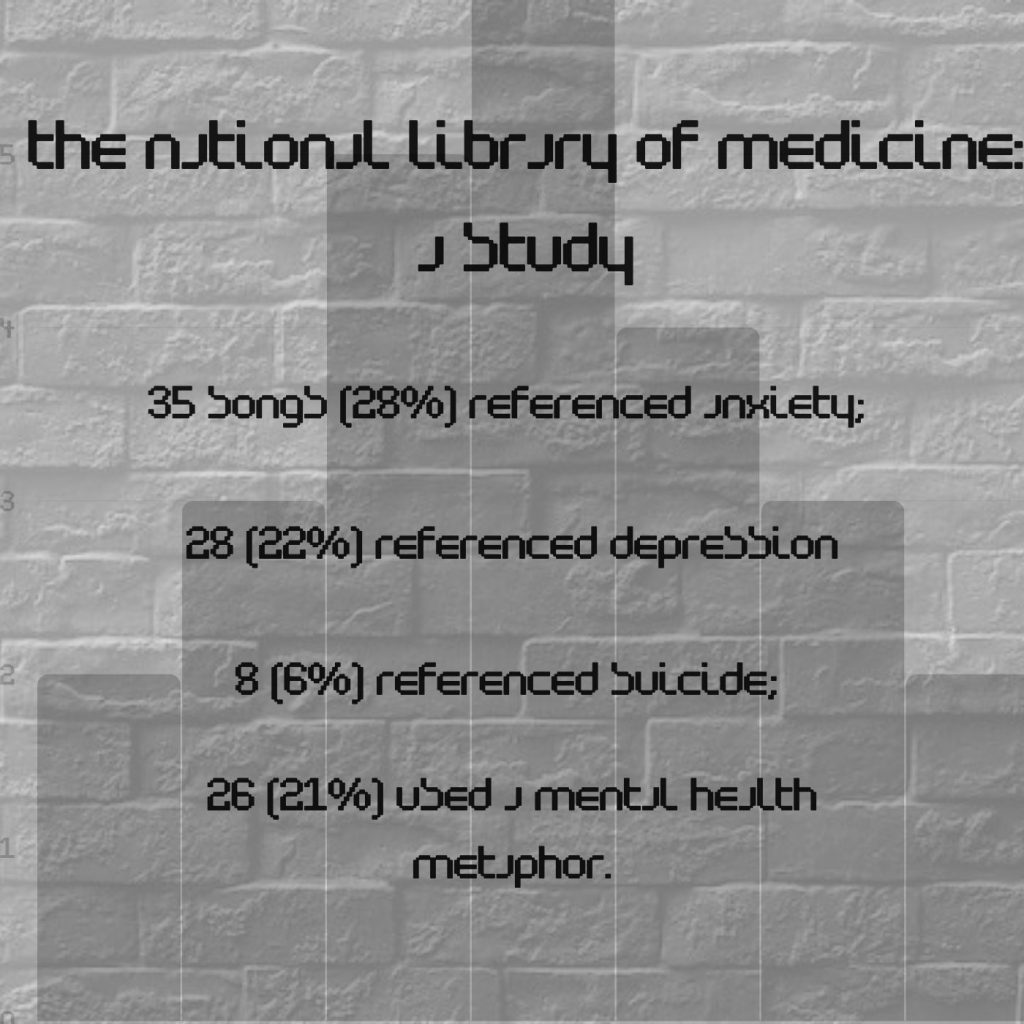
Credit: Edited by Taylor Contarino, via data courtesy of the National Library of Medicine (Data Via: The National Library of Medicine)
Within the sample of 125 popular rap songs (songs released between 1998 and 2018)…
- 35 songs (28%) referenced anxiety;
- 28 (22%) referenced depression;
- 8 (6%) referenced suicide;
- 26 (21%) used a mental health metaphor.
- Significant increases were found from 1998 to 2018 in the proportion of songs referencing suicide (0% to 12%), depression (16% to 32%), and mental health metaphors (8% to 44%).
- Stressors including “environmental conditions” and “love life” were the most likely to co-occur with lyrics referencing mental health.
The Public Health Post conducted a study in May of 2021 and found that between the years 2008 and 2017, the US saw a “drastic increase in suicide risk among young people. During this time, the rate of suicide between ages 10 and 24 increased by 56%, and suicide rates for people ages 15 to 24 were the highest they had been since 1960. Over this ten-year period, suicide rates for Black youth increased by 60%.”
That same study also analyzed musical factors present during this time frame and found: “The percentage of rap songs referencing suicide (0% to 12%) and depression (16% to 32%) increased dramatically as did metaphorical language referencing mental health (8% to 44%). References to suicide started to emerge notably in 2013.”
Credit: Public Health Post https://www.publichealthpost.org/research/rap-music-mental-health/
So, what is the solution? Many hip-hop insiders believe that healing comes from inside the community. Others believe that the industry needs to rebuild it’s infrastructure from the inside out.
A serious-looking young Big Wy is photographed outside of a liquor store. Photo Courtesy of Kerrington Dillon
Seeing the Light: Common on Community Health
Common, one of Chicago’s most beloved rappers, has recently been shifting his focus to health in the hip-hop music industry. Common recently released a book detailing his ever-expanding relationship with wellness and mindfulness: “And Then We Rise: A Guide to Loving and Taking Care of Self,” a tribute to celebrating and encouraging health and mental health in Black and Brown communities.
Images photographed at the Hip-Hop Til Infinity Museum. Photo Credit: Taylor Contarino
Despite hip-hop genre being such a powerful and positive influence in the lives of so many, there has always remained a lack of resources including access to health care services, and insurance as a whole.
Common refers to the concept of a lack of health care being a major source of the issues within the industry that still persist today. “One thing we missed out on, in fact, in music, was support for health care,” he said. “I want you [all] to be taking care of yourself and live the healthiest and brightest and happiest life possible.”
Rappers Die Too Much
In a 2022 song, “On Faux Nem,” Lupe Fiasco says: “Rappers die too much.” In the track, he highlights the industry’s “glorification of violence,” calling the industry out to do better.
Eazy-E died of AIDS at 30. Nate Dogg’s death at 41 of a stroke. Pimp C died at just 33 years old due to sleep apnea and an overdose of cough syrup.
“In Hip-Hop, we have so many of these great artists. They try to find out what to do and, and ok to this, to be a musician and you thought that was gonna be your career,” said Common.
What happens when you find that your career doesn’t necessarily support your health or offer you the benefits necessary to take care of yourself? This is a common trend within the music business.
Where do musicians go, when their career is so “untraditional,” but they still need to be able to take care of themselves?
“The simple thing of health care would have benefited so many of the artists that we’re talking about,” nailed down Common.
Images photographed at the Hip-Hop Til Infinity Museum. Photo Credit: Taylor Contarino
Common and other hip-hop heavyweights are doing community work to advance towards a more equitable industry.
“We also need to empower artists in hip-hop who are doing things healthily. Artists who are doing the work,” said Salmon, who believes more awareness is what the industry needs to progress towards health in hip hop.
Common reflects on his career, and the fact that he’s experienced many ups and downs across his long and wide musical career: “Ultimately, those emotional roller coasters – being popular and not being popular – affect your emotions too.”
Popularity is another factor that can affect an artist’s mental health, and the consequences of not taking care of the mental health repercussions can be dangerous.
Visual scenes photographed at the Hip-Hop Til Infinity Museum. Photo Credit: Taylor Contarino (via The Hip-Hop Til Infinity Museum)
Nothin[G] but a Health Thing
After beating his murder case, Snoop Dogg did a 360 of his life, and has changed his narrative ever since, especially in his songwriting and in the musical projects he has put out in more recent years.
“On my second album, ‘Tha Doggfather,’ when I beat my murder case, I redirected my pen to write life because I felt like I had wrote death all up until that point,” said Snoop Dogg in an interview with DJ Fatman Scoop on Instagram live in early 2021.
“When I started writing ‘Tha Doggfather,’ I lost a lot of fans. I lost a lot of homies because they wanted me to keep it gangsta after beating the murder case. They wanted me to glamorize and glorify, but I was like, somebody’s life was lost. My life was changed. This is a real situation,” Snoop said. “I have actual remorse. I feel bad.”
The album dropped in November of 1996.
Snoop Dogg track art is photographed at the Hip-Hop Til Infinity Museum. (Photo Credit: Taylor Contarino)
Snoop Dogg made a decision to stop rapping about “death and violence,” as he referred to in a 2021 interview with Rolling Out.
In recent years, Snoop Dogg has taken a stance against the violence he used to previously rap about, and even announced that he would give up smoking at 52 years old via an Instagram post.
A Love-Hate, Love-Concern Relationship
Deal has been ingrained in the hip-hop music scene for quite some time: “I’ll start with the positive sides: it really drives popular culture, communications. It’s used as a powerful tool for developing self-concept. It’s a revenue generator, it keeps money circulating,” said Deal.
Hip-hop is a home for so many – a beacon of light and of hope. Deal recognizes that the hip-hop culture is symbolic of hope and of healing – while still simultaneously having underlying issues that need to be addressed.
“It can really be a tool for mental health and can give some alternatives to options that aren’t constructive,” said Deal. “Parties instead of gun violence. Graffiti, as an artistic outlet. Dancing, breakdancing, physical health, alternatives to violence. Artistic outlets.”
“The current state: I have a love-concern relationship with,” said Deal.
Community Rules Everything Around Me
Members and fans of the hip-hop music community have gradually begun working towards positive change across the industry. If nothing else, eyes have been opened to the fact that change is needed, and some heavy-hitters are stepping back into the spotlight to save the genre and the artists that they’ve watched come up behind them.
Jared Oluwa has worked in music sync licensing since 2017. One of Oluwa’s inspirations is Nipsey Hussle, who was known to be an advocate for mental health and wellness across the industry before his death in 2019 at just 33 years old.
“I would like more artists to be more vulnerable,” Oluwa said, “For ourselves and for our own city.”
“We still have older people that are pushing the narrative, [of violence and toxic masculinity] too. If that’s the elder, the role model, how are we going to help the youth?” Oluwa asks.
Troy Oglesby, Jr., intends to use his career to shine light on community and health coming together: “When people are going through a lot, they lean on music,” said Oglesby, Jr., a music producer who also has a tech company.
“Self-care should be more prioritized than it is,” said Oglesby. The money, glamor, and fame is higher on the docket – which is unfortunate.”

Images of Los Angeles photographed at the Hip-Hop Til Infinity Museum. Photo Credit: Taylor Contarino
The Aftermath: What’s Next?
Deal and his colleague, Nye, teach a class on hip-hop history and culture. Nye said that he believes in fostering a greater conversation surrounding violence within the music industry, including gun violence, as well as substance abuse.
“[I’m trying to] build the conversation, the generational conversation about it… not just attacks and shootings, but the overdoses.” Nye said, “The list is getting long.”
Scenes of a hip-hop documentary are photographed at the Hip-Hop Til Infinity Museum. Photo Credit: Taylor Contarino
A study by Billboard found that after Lil Peep’s drug overdose and death, he increased by 458 percent in popularity. After XXXTentacion’s death in June 2018, his sales skyrocketed 1,603 percent and Mac Miller’s popularity grew by 970 percent after he died. How can we fix an industry where pain sells, and healthy habits are shamed rather than celebrated?
So, what is the solution to creating a healthier, safer, and more sustainable hip-hop music industry? We ask ourselves the question.
“I feel that a lot of the healing can come from the actual rappers in the community among themselves,” Deal said.
Healing within hip-hop will not happen all at once – but with a redirection of focus onto sustainability, health, and mindfulness, the agenda can be pushed to the forefront, and it all starts with community – from the heavy-hitters, to the up-and-comers.
A wall of colorful visual imagery is photographed at the Hip-Hop Til Infinity Museum. Photo Credit: Taylor Contarino
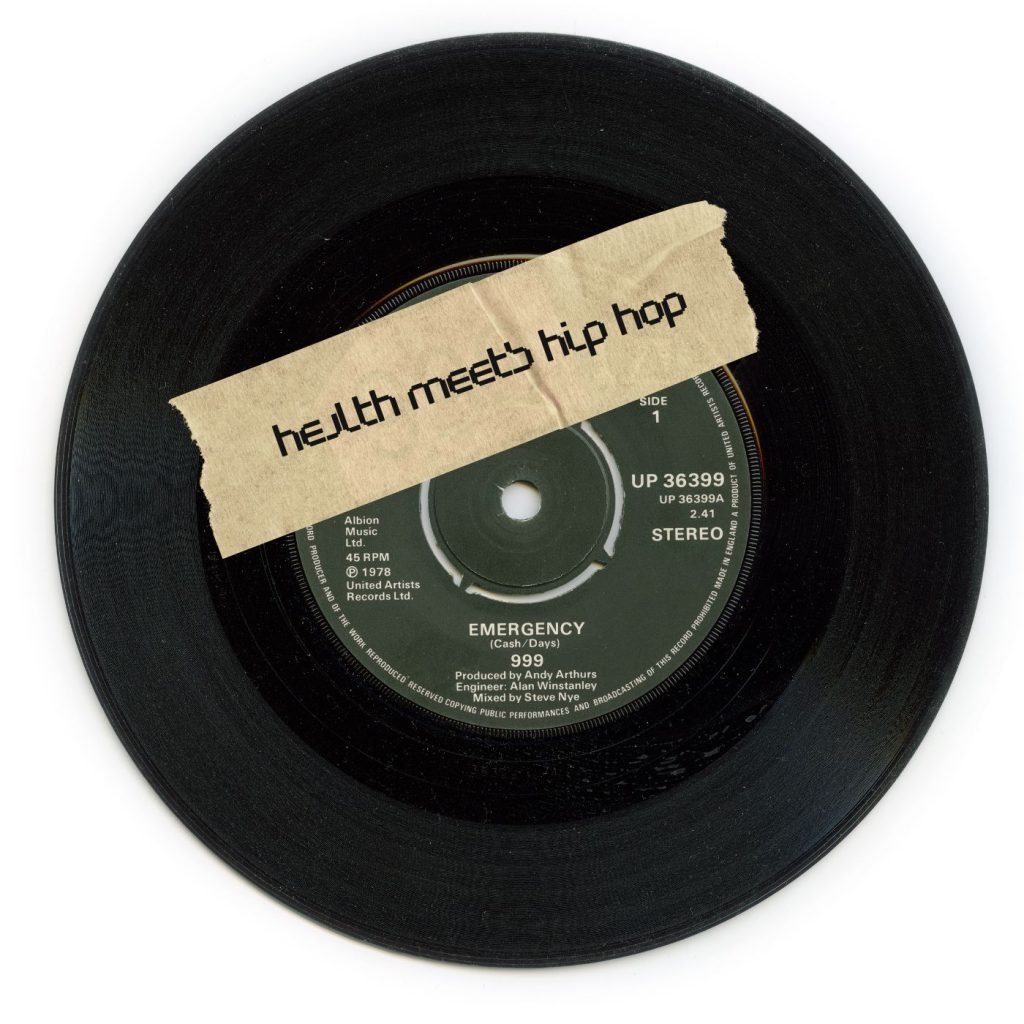
A PHOTO GALLERY: A TRIP TO THE HIP-HOP TIL INFINITY MUSEUM (SUNSET BLVD. IN LOS ANGELES, CA. Photos Courtesy of Taylor Contarino.)
